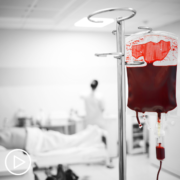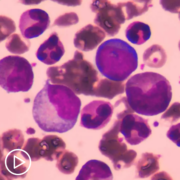The Importance of Molecular Testing Following an AML Relapse
The Importance of Molecular Testing Following an AML Relapse from Patient Empowerment Network on Vimeo.
Why do you need molecular testing following an AML relapse? Dr. Sanam Loghavi emphasizes the importance of this essential testing and why it’s necessary following relapse.
Dr. Sanam Loghavi is a hematopathologist and molecular pathologist at The University of Texas MD Anderson Cancer Center. Learn more about Dr. Loghavi.
Related Resources:

|

|

|
Transcript:
Katherine Banwell:
Unfortunately, relapse can happen following a course of treatment for AML. Should patients undergo molecular testing again before choosing another round of therapy?
Dr. Sanam Loghavi:
100 percent yes, that is always a yes. So, like I said, at baseline there are certain recommendations and the standard of care is to perform genetic testing.
But I cannot emphasize this enough, that AML or any cancer, for that matter, cancers tend to be smart, so they bypass the mechanisms that we try to eliminate by our targeted therapies.
So, oftentimes the genetic landscape of disease will actually change upon relapse or what we refer to as clonal evolution, and you may hear this terminology in the literature. So, it’s very important to molecularly or genetically characterize the disease at relapse before you decide how you are going to alter the course of treatment at that point.
Katherine Banwell:
Dr. Loghavi, what are you excited about in your research right now?
Dr. Sanam Loghavi:
Sure. So, I’m a pathologist, so I do a lot of molecular testing, and I also do a lot of measurable residual disease testing, and measurable residual disease tends to be one of the most informative factors in the care of patients with acute myeloid leukemia. So, these are the things that we’re very excited about, again, identifying better molecular targets of therapy, being able to measure residual disease at a more sensitive level that allows us to make better informed decisions for the care of our patients. And also, again, identifying the mechanisms of how AML develops in order to be able to eliminate the disease.












